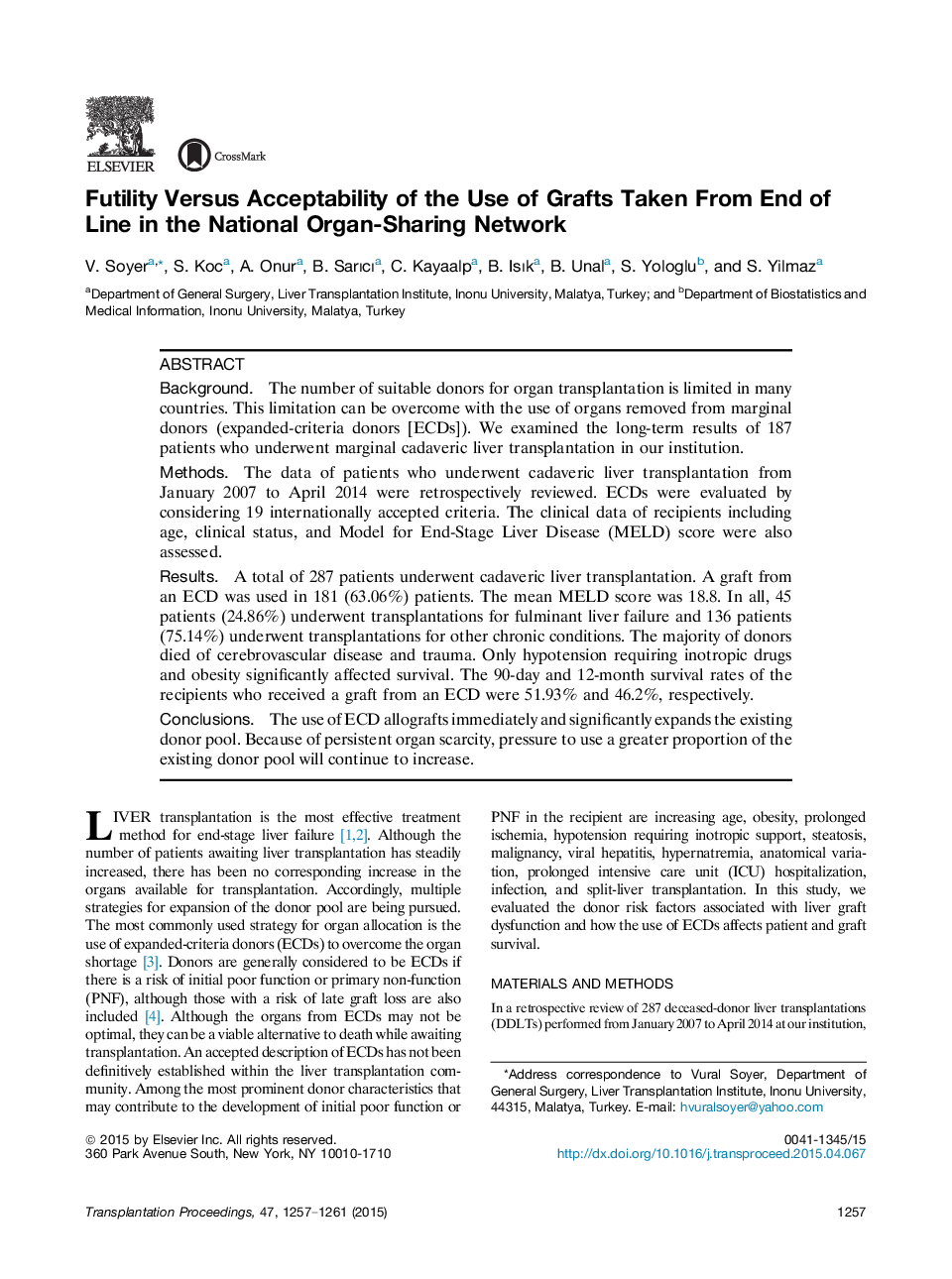| Article ID | Journal | Published Year | Pages | File Type |
|---|---|---|---|---|
| 4257354 | Transplantation Proceedings | 2015 | 5 Pages |
BackgroundThe number of suitable donors for organ transplantation is limited in many countries. This limitation can be overcome with the use of organs removed from marginal donors (expanded-criteria donors [ECDs]). We examined the long-term results of 187 patients who underwent marginal cadaveric liver transplantation in our institution.MethodsThe data of patients who underwent cadaveric liver transplantation from January 2007 to April 2014 were retrospectively reviewed. ECDs were evaluated by considering 19 internationally accepted criteria. The clinical data of recipients including age, clinical status, and Model for End-Stage Liver Disease (MELD) score were also assessed.ResultsA total of 287 patients underwent cadaveric liver transplantation. A graft from an ECD was used in 181 (63.06%) patients. The mean MELD score was 18.8. In all, 45 patients (24.86%) underwent transplantations for fulminant liver failure and 136 patients (75.14%) underwent transplantations for other chronic conditions. The majority of donors died of cerebrovascular disease and trauma. Only hypotension requiring inotropic drugs and obesity significantly affected survival. The 90-day and 12-month survival rates of the recipients who received a graft from an ECD were 51.93% and 46.2%, respectively.ConclusionsThe use of ECD allografts immediately and significantly expands the existing donor pool. Because of persistent organ scarcity, pressure to use a greater proportion of the existing donor pool will continue to increase.
